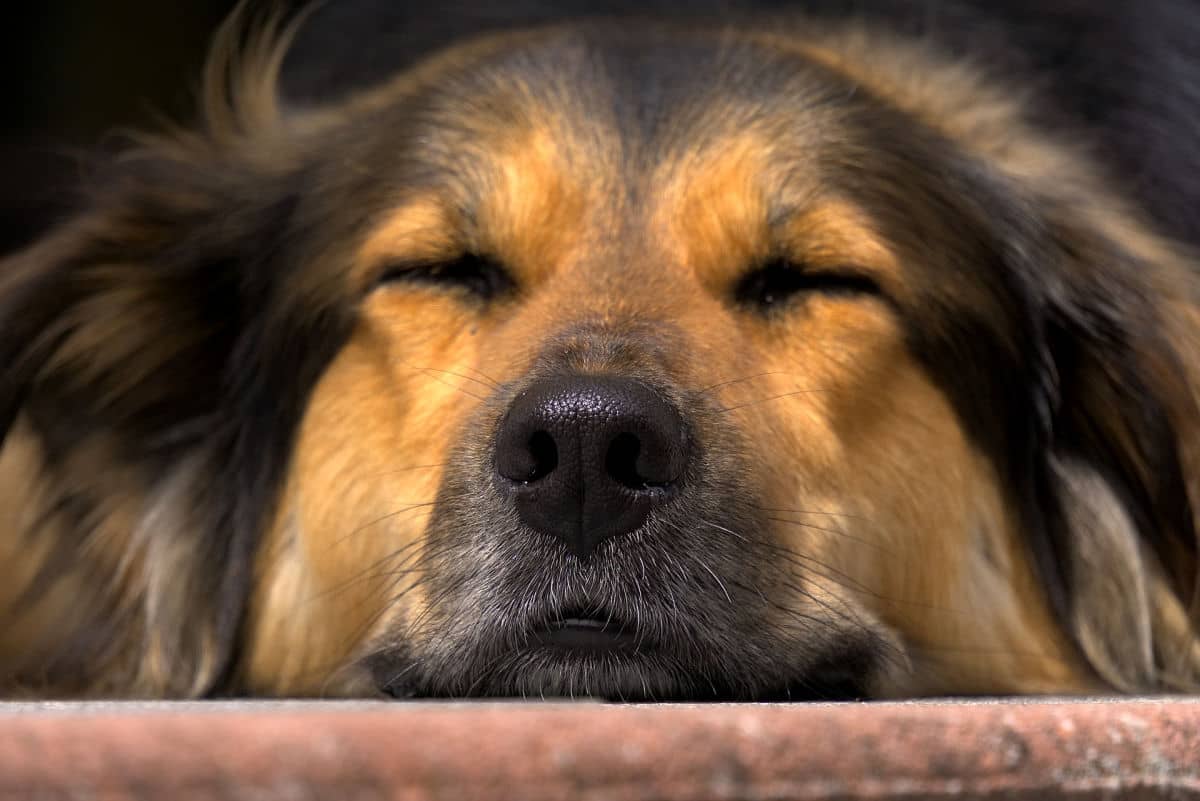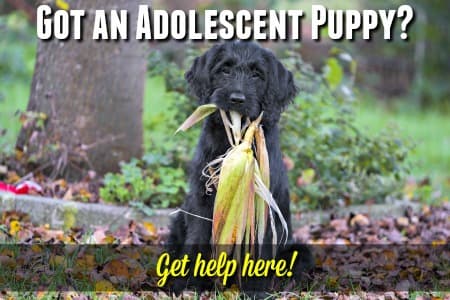FYI: If you buy something through a link on this site I may earn a commission - at NO extra cost to you.
About Dog Aromatherapy
Dog aromatherapy can be used to treat a whole host of different conditions and problems, so if you've never thought of aromatherapy as being a treatment for dogs, you might want to think again!
never use essential oils on (or around) cats!
Cats are extremely sensitive to essential oils so NEVER use them on, or around, your cat without first discussing it fully with your veterinarian.
This also means you shouldn't use diffusers, plug-ins or any other type of products which release the oil into the air if you have a cat.
Other pets such as birds are also at risk and shouldn't be exposed to essential oils.
Aromatherapy treats the whole body (human or canine) - both emotionally and physically.
Essential oils have antiseptic, anti-microbial, calming, revitalizing, regulating and detoxifying properties... this is as true for dogs as it is for humans.
Used properly, they're a safe, gentle, effective and side-effect-free way to treat a whole host of doggie problems including anxiety or fear, allergies, skin conditions, joint health, liver function and much more.

The Romans, ancient Egyptians, ancient Greeks and the Chinese had a very sound understanding of how aromatic flowers/herbs and plants could be used to their benefit, and humans have used this natural treatment for centuries.
Applying it to the canine world is a much more recent invention, but one that is growing in popularity.
Many veterinary practices are beginning to recognize the benefits of alternative practices which include acupuncture, herbal remedies, aromatherapy and more.
As are pet health insurance companies who are now including many of these treatments in their coverage/plans.
How Dog Aromatherapy Works
Aromatherapy works by stimulating the lymbic system of the brain (this is the part of the brain that controls moods and emotions), which is why it's so effective in eliminating feelings of stress, anxiety, fear, anger etc.
Aromatherapy oils can be inhaled, or absorbed through
the skin (and occasionally taken internally). Depending on the specific oil, or combination of oils, being used they can be ....
- Calming
- Sedating
- Pain Relieving
- Energizing
- Rejuvenating
- Anti-fungal
- Anti-inflammatory
- Anti-microbial
- Anti-viral
- Repelling Insects
- Diuretic
... and more.
Using Aromatherapy For Dogs
If your dog has a fearful or anxious personality or gets stressed out when you take him on a road trip or let off 4th of July fireworks, then the an aromatherapy oil that promotes a feeling of calm relaxation can work wonders.
Aromatherapy for dogs are also often used to treat....
- Hyperactivity or aggressive behavior
- Separation Anxiety and nervousness
- Rashes, burns or minor skin irritations - including allergy rashes
- Parasites such as fleas and ticks, flies or mosquitoes.
- Joint problems including arthritis and growing pains
- Bad breath
... and many others.
They can also be used as 'preventative maintenance', keeping certain physical systems (such as the digestive tract, liver, immune system etc.) healthy.
Dogs have a much more acute sense of smell than we humans do (with over 2 million scent receptors in their nasal passages!), and when they inhale the aroma of essential oils, it passes into their bloodstream pretty quickly. This makes aromatherapy a fast-acting and efficient way to treat a variety of conditions.
Generally dog aromatherapy essential oils are massaged into your furry friends' skin - and what dog doesn't enjoy a nice massage!
Depending on what condition is being treated you may need to target a particular area of the body, such as the spine and specific joint, or the belly (the ultimate belly rub?). Other times a gentle all-over massage can do the trick.
To get the maximum benefit of the oil (and prevent an oily coat) concentrate on the hairless, or least hairy, areas such as the belly, inner legs and thighs.
Often aromatherapy oils are incorporated into other dog care products such as shampoos, conditioners, 'spritzers' etc.
There are also other ways that you can use dog aromatherapy oils to help your pup. Heating the oil blend and releasing it into the air in tiny particles, over a sustained period of time, can help the effects last longer.
To do this you can use a diffuser, such as Nutri-Vet Pet-Ease for Dogs it's a 'plug-in' unit (sort of like a room air-freshener that fits in the electrical socket), sprays, candle-oil warmer and so on.
Scented plug ins, candles or diffusers which do NOT use purely essential oils can be toxic, even deadly, to dogs (and even more so to cats/birds and other pets).
Pets have died as a result of inhaling them so please, be aware of the dangers. You can learn more here.
Although some oils can be taken internally, or placed on your dogs' tongue, only do this if the instructions SPECIFICALLY advise this, because many essential oils are highly concentrated and can be dangerous, even toxic, if ingested.
You can find some high quality aromatherapy oils and a whole ton of other aromatic products that have been specifically formulated for your pet on this website: www.silkroadoils.com
I personally use Young Living essential oils because they're extremely high quality. You can buy from a distributor or directly from the youngliving.com website.
Dog Aromatherapy - Safety & Suitability
Especially formulated dog aromatherapy oil blends have been carefully prepared to give the best results, safely and without side effects.
If you want to mix your own canine aromatherapy oils (usually somewhere between 3 and 5 different oils are blended together), you need to use only 100% pure, therapeutic-grade essential oils and follow some specific safety precautions to make sure you get it right.

Dogs vary enormously in terms of
size, and consequently so does the amount of oil that you can use on
your dog.
A Great Dane or other giant breed may need 6 drops of oil massaged into his body, whereas a tiny Yorkie may only need 1. You don't want to overdose your dog, so always be very cautious in apply products.
Young puppies, older dogs and those who are sick need special care and these are situations where more isn't better... in fact, if in doubt use less oil than generally recommended, or use a diffuser at first.
Also, these oils are strong, so avoid direct contact with your dogs' nose, inner ear or eye area. Also if you're using the oil on your dogs tummy, be careful not to get it on his/her genital or anal area.
Essential oils should always be diluted with a 'carrier' oil (such as Jojoba, Sweet Almond or Ollive oil) before use. If you've never used aromatherapy oils on your dog before, it's a good idea to do a 'patch test' for sensitivities/allergies first. This is something like the test you do before using a hair-color product, or other chemical compound, yourself.
To do this test you need to apply a tiny drop of the aromatherapy product you want to use directly to your dogs' skin - on the skin on the upper inside of his leg ('arm-pit') is a good place. Wait 24 hours and then check the area for any swelling, redness or irritation.
If all is well, then you can go ahead and massage in the oil as indicated for his condition.
Some of the more popular essential oils that are generally considered to be safe for dog aromatherapy include -
- Bergamot
- Chamomile
- Clary Sage
- Eucalyptus
- Ginger
- Lavender
- Marjoram
- Niaouli
- Peppermint
- Rose
- Rosemary
- Sandalwood
- Sweet Orange
- Valerian
- Vetiver
- Ylang Ylang
It's also a good idea to check with your veterinarian before using any sort of natural remedy on your dog.
Do not Use These Oils on your dog
There are some essential oils that you do NOT want to use on your dog. They include:
- Birch
- Camphor
- Cassia
- Clove
- Oregano
- Pennyroyal
- Wintergreen
- Wormwood
You want to be sure that your pet is perfectly healthy and that he doesn't have any health conditions that could interact with essential oils in a negative way.
Do NOT use dog aromatherapy to treat:
- Young puppies
- Senior dogs
- Pregnant dogs
- Dogs who are nursing puppies
In all these situations (and if your puppy or dog is sick), ALWAYS consult your vet before undertaking any sort of treatment, natural or otherwise.
Aromatherapy has many, many safe benefits for your pooch, but it should never be used to replace regular veterinary care. It's in your dogs' best interests to use canine aromatherapy as a complimentary treatment, alongside any mainstream therapies or medications prescribed by your vet.
If you follow all these safety precautions, dog aromatherapy can prove to be a wonderful, pleasant way to treat help your dog stay happy and healthy.
you might also like...
- Home
- Dog Health Information
- Natural Remedies for Dogs
- Dog Aromatherapy
FTC Disclosure: Some pages on this site contain affiliate links. I may earn on qualified purchases.





